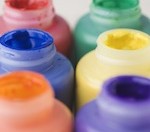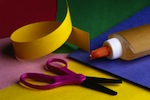There are many different types of painting, but when you are thinking about young children, acrylic painting is the most common place to start. Acrylics are the easiest of painting genres to learn, and kids can achieve a fairly instant result. To create a great painting, you need to be able to create a basic drawing as well, so often painting classes for beginners incorporate a little of both.
Where do you learn Painting?
There are lots of different places that offer drawing and painting classes for kids, and these vary a lot from city to city and region to region in NZ.
Private art galleries often have links to a studio school which may provide children’s classes, usually throughout the school holidays. Some primary schools offer after-school extension classes for their art-smart students, and community education facilities often invite guest artists to facilitate short one-day workshops. There are also many artists who offer classes from their home – the trick is finding them!
The easiest way to find a class is to contact your local arts council (you can contact them through your city or district council). It is their job to encourage and develop arts within the community, so they usually have a pretty good database of any art and craft classes available.
What age can your child start Painting?
We all know that painting starts at pre-school, and our toddlers are prolific painters! However, if you are looking for your child to start learning specific techniques, then 10 years old is about right. By this stage they have a basic understanding of scale and perspective, and they can get their creative and logical brain working at the same time.
Child’s Birthday gift? Find a great selection of popular Books & Authors.Age: 0 1 2 3 4 5 6 7 8 9 10 11 12 Years Old |
||||
|
|
|
|
|
|
What equipment do you need for Painting?
A good basic painting kit should include:
- Some drawing pencils and an eraser. Before your child starts painting, they will need to do some sketches. Soft pencils like 2B or 4B are perfect for drawing.
- A set of student grade acrylic paints. At the very least your child should have black, white, and all the primary colours (red, blue and yellow). From this pallet they will be able to mix any colour they want, and mixing is an important technique to learn. If you really want to add extra colours to their pallet, choose burnt umber (brown) and yellow oxide (tan), as these are quite difficult colours to get right in the beginning.
- A set of student brushes. There are hundreds of different brushes available. Each type of brush is designed for a specific purpose and they vary immensely in quality. To start with, a set of flat synthetic brushes will work fine.In the early stages, having several brushes of various sizes is more important than having really high quality bristles. Once your child gets the hang of painting, you can start dishing out the big dollars for an artist grade brush.
- Something to paint on. Your child will need plenty of practice paper and some canvas for their really special work. Practice paper needs to be heavy enough to hold thick paint, so look for pads of cartridge paper or student drawing blocks.For special work, your child can paint onto stretched canvas panels, which are widely available in a whole range of shapes and sizes. Stretched canvas can be hung straight away without the need for framing.When purchasing stretched canvas there are two main things which indicate quality.1. A staple free edge2. The depth of the canvas – 1.5 inch is artist grade, 3.5 inch is exhibition grade. Less than 1.5 inch is student quality only.
Canvas also comes in flat sheets, and is most often purchased in pad lots. However, if your child paints from a canvas pad, you will need to get the work framed before hanging it on the wall.
- At the beginning your child will not need a pallette and easel – a saucer or an ice cream container lid is fine, and an easel comes much later down the track. If you do want to buy an easel, shop around online, as they range from about $50 right up to $300-$400.
How much does Painting cost?
Children’s painting lessons usually run for a complete school term, and you can expect to pay anywhere between $110 – $180. For the most part, this will include all the materials, however you will be encouraged to buy your own supplies so that your child can practice at home.
Chromocryl student acrylics are what are traditionally used in schools, and these cost about $20 for a set of 5 tubes (black, white, red, yellow and blue). As your child progresses you may like to increase the quality of the paints they use, and as you do the price will obviously increase as well. A2 Student Acrylics are generally the best student grade acrylics on the market, and these are about $7 a tube. Once you move into artist grade acrylics, you can expect to pay between $10 – $15 each.
When it comes to brushes you really do get what you pay for. You should be able to find a good set of student brushes for about $12, and this will have 6-8 brushes of various sizes. Avoid the temptation of buying brush sets from emporium type stores, even if they seem like a real bargain!
Just as with the paints, you can start to increase the quality of your child’s brushes as they get more practised. Higher quality brushes are usually sold separately and can range in price from $2-3, right up to $50 or $60. Rest assured it will be a long time before your child needs a brush like that!
A student drawing block will cost you less than $5, and a good A3 size cartridge pad is between $10 – $15. Canvas pads vary in price depending on the size and the number of sheets in a pad, but you can expect to pay about $2 per sheet.
Stretched canvas panels vary dramatically in price and quality. In the beginning, you can buy packets of 3 small canvases for about $8 in supermarkets or emporiums. As your child progresses you can purchase deeper, better quality panels of the same size, for about $8 each.
How long does it take to learn Painting?
Painting is definitely a lifelong learning process and as with anything, the more you do it, the better you get. Children will need at least a year of lessons before they really get a grasp of all the techniques. After that they will just keep developing and honing their skills.











